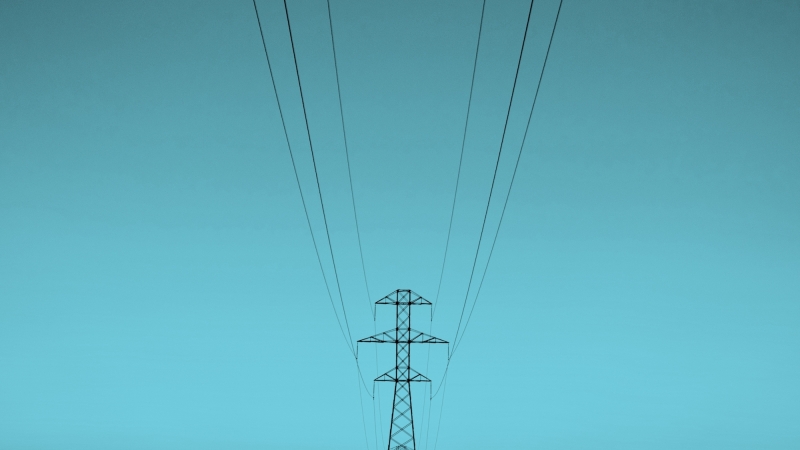Posted: 28th January 2019
The memory of the ‘Beast from the East’ still lingers in the minds of UK commuters, workers and, perhaps more than anyone else, water suppliers.
Memories of burst pipes – cracked under the pressure of rapid freezing and thawing – surely still send a shiver up the spine of those unfortunate homeowners that had to clean up the mess. Slippery roads, flooded rivers and battering winds also sent bad weather insurance claims skyrocketing and backing-up – no doubt adding to the unpleasant memory of heavy snow for insurance firms and their customers.
One of the most chilling results of the Beast’s arrival was the fact that the freeze and resulting thaw meant water supply was cut for hundreds of thousands of people across the UK, with 36,000 customers unable to get the water flowing for over 24 hours. As Ofwat, the water industry regulator, states, “losing water supply can cause huge disruption to peoples’ lives and livelihoods. Water provision is fundamental for everyday life”.
The ‘Beast from the East’ was certainly an extraordinary weather event, but that’s not to say something like it won’t happen again this year, especially seeing as we’re still in an El Niño cycle and extreme weather events are becoming more common. It might have been relatively mild so far, but we all know how quickly the weather can change here in the British Isles.
Responding to the water chaos over 2018, Ofwat produced a detailed report, Out in the Cold – Water companies’ response to the ‘Beast from the East’, an in-depth and research driven examination of how water suppliers coped during the extreme weather period and how their customers were impacted.
Following the release of the report, every water company in the country was called to respond with a report of their own, highlighting their ability (or struggle) to be operationally resilient in the face of past and future weather events.
Readers of these reports will quickly see a single theme recur again and again: water suppliers need to invest more in contingency.
The ‘Beast from the East’ certainly caught us off-guard last year, but what could firms be doing now to ensure that they are prepared for another 'Freezing February' or ‘Mad March’ of miserable weather?
The Key Framework
Alongside their duty of protecting the interests of consumers, since 2014 Ofwat has taken up an additional responsibility: ensuring that water supplies are sufficiently resilient to a variety of shocks to meet the needs of consumers in the long term. Ofwat continuously checks that company Boards are acting in a responsible fashion for the efficient financial and technical operation of their firm.
The framework that Ofwat champions is simple:
- Avoid
- Cope
- Recover
Firms need to prove they have the financial resilience not just to cope and recover from extreme weather events (and other disruptions), but also avoid the dangers that lead up to these. To ‘avoid’ a disaster would require effective forward planning and stress-testing, perhaps going so far as role-playing potential ‘near-miss’ scenarios that will ensure staff, from the Board to front-line teams, understand how to deal with tasking situations.
Avoiding such damaging events will also require putting in place effective warning systems that could, perhaps, take into account long- and short-ranged weather forecasts, historical climate data and staff resource levels. Of course, it’s not always easy to predict where and when resource will be needed, as many of the responses to Out in the Cold showed. The weather is still largely unpredictable too far in advance, so it is likely that firms will continue to be caught out no matter what.
What they could be doing to prepare, however, is making the right contingency investments now in order to stay ahead in the future.
AVOID
Firms looking to avoid future freeze / thaw disasters should look to invest in a good deal of contingency resource long before winter and spring. They should be improving the reliability of their services by repairing leaks and removing blockages early. Naturally, they will also be wanting to increase their capacity to take on customer contact at levels demanded by periods of extreme weather and reduce the dependency on their human resource whenever possible.
Encouraging people to reduce their use of water during extreme weather periods, through television, radio and social media campaigns, is also a good idea for firms looking to avoid the stress on assets and resource that a freeze / thaw brings. Smart meters could also be installed at greater volumes to allow people better visibility of their water usage.
Automated systems (such as social media bots or interactive outage maps) may prove helpful in shifting some of the stress in this area, but this should also be monitored by trusted human employees to ensure that they are continuously keeping people up to date and sharing the correct information.
COPE
On top of investing in resource capacity, firms should be taking a long, hard look at their resource capability. In some cases, it could be that specialist development of existing staff could count for more than onboarding new people.
Complaints- and people-focussed coaches will be able to guide staff through the various tools and techniques for dealing with customers of all kinds and from all areas of the country. This will be particularly crucial in times of extreme weather, as complaints and communications generally become more urgent, complex and difficult to deal with quickly.
Where a sudden upsurge in complaints does occur, having an outsourcing partner on hand that can take some of the load off of your site can prove incredibly valuable. Not only will this free up your internal staff to take on the most time-crucial or impactful cases, but it will also allow each complaint-handler to spend more time with impacted individuals. The time and attention given to each customer is key to turning complainants into promoters of your business, as you will find yourself suddenly able to give more personalised responses and solutions.
The Out in the Cold report highlighted the fact that, in some of the worst affected areas, 40% of customers impacted by water loss received no communication from their company, and when they did this communication lacked timely, targeted or accurate information.
Firms need to take a proactive approach to reaching out to affected customers, even if they do not yet have proof that they have suffered loss of supply. Customers want to feel like their suppliers are not just listening and being reactive to situations, but actively consulting them to determine if they or their neighbours are facing an issue. Doing this will require an investment in trained communicators, armed with detailed customer information and detailed procedures that will help them help the customer.
We have previously written about how this communication should be targeted at the most vulnerable in our society, as they will likely suffer more from a lack of supply and communication than those in less precarious situations. Here again, training comes into play, as case handlers and first-line teams will need to be able to identify just how each individual customer fits into the ‘vulnerable’ category. It’s certainly not a ‘one-size-fits-all’ label.
RECOVER
Recovering from a surge situation will surely involve a deep internal review and root cause analysis on the part of the supplier. This should involve structured interviews with key personnel from all teams – from those monitoring water flow all the way to the Board deciding the financial investment into various business units. This review should aim to uncover the ‘weak links’ in the chain and offer solutions for moving forward reassured and more stable.
Customer communication shouldn’t just happen during an extreme weather event, of course. It should also be conducted after incidents to ensure that their experiences and feedback go on to inform ongoing efforts to improve operational resilience. Though firms will surely have employees ‘on the ground’ during extreme weather events, it is likely that the average customer will have equally valuable information about the event just passed, even if it is not as technically detailed as that of engineers. A good outsourcing partner will be able to convert complaints handling capacity to reach-out work after the event and convert findings into meaningful management information for the firm.
Keeping the water flowing and the lights on
While we have previously spent time focussing on water suppliers, it is likely that future extreme weather events could plunge many houses into darkness as well as cut off their water supply. The simple truth is that infrastructure will fail if stressed too badly and all utilities providers, whether they be water, gas or energy suppliers, will have to adopt many of the strategies outlined above.
Extra resource, deployable at a moment’s notice, could be a lifesaver – not just for the firm hit by a sudden surge in communication, but perhaps also for those customers trapped in homes without essential services. The quicker that issues can be resolved, compensation delivered, and customers’ lives returned to normalcy, the better for your firm.
This week, Huntswood will release a brand-new, research-based White Paper for the utilities sector. It will discuss how water, energy and gas firms can achieve 'complaints excellence' and turn complainants into promoters. If you would like to receive this paper as soon as it is released, please fill out the form provided.







